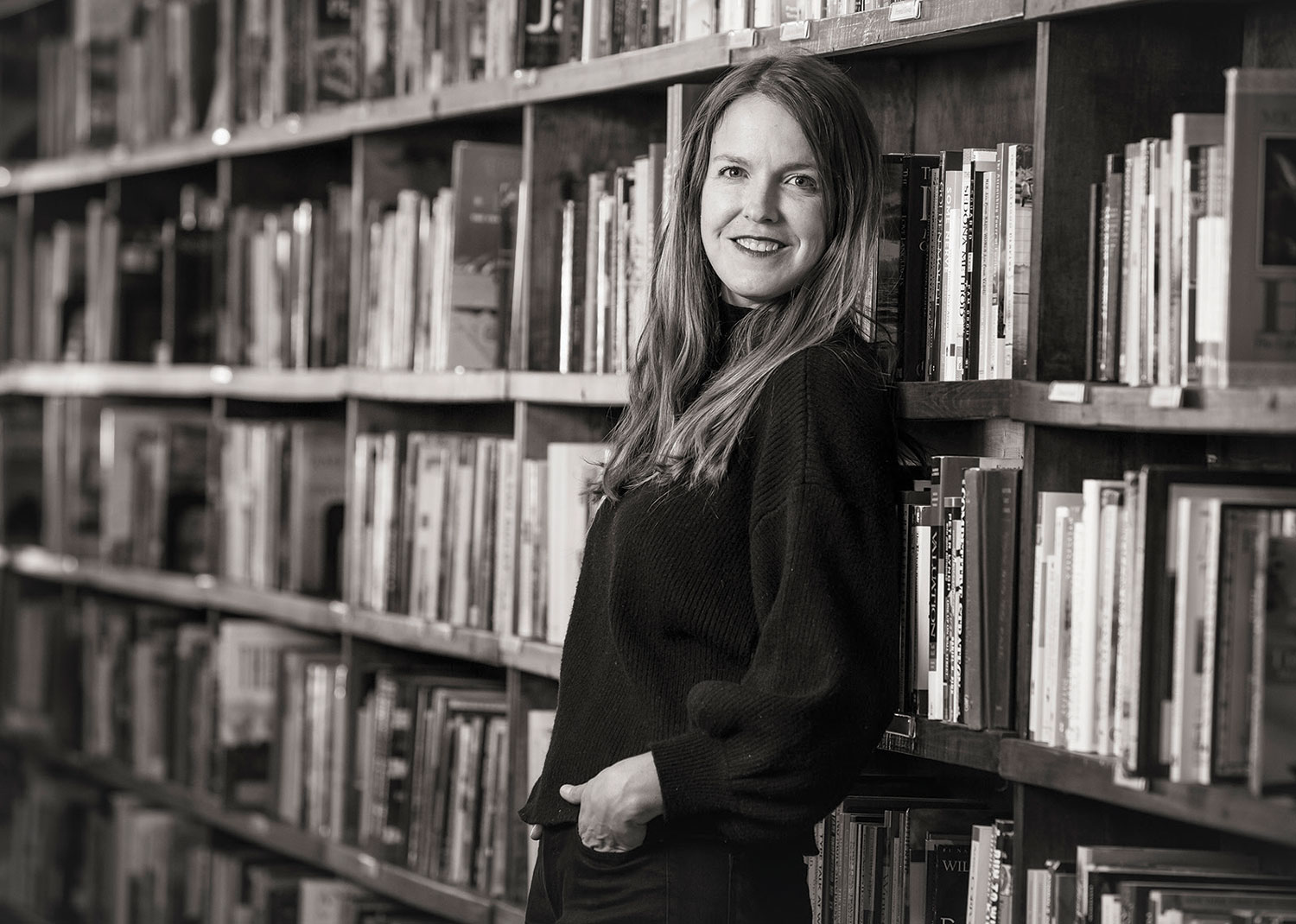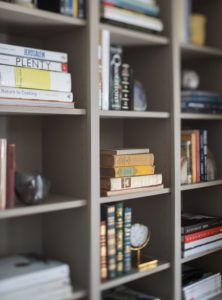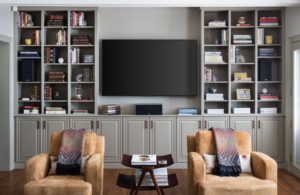
30 Apr Design Elements: 6 Tips for designing a home library
With a master’s degree in library and information science, Christy Shannon Smirl has combined her love of books and interior design to create Foxtail Books & Library Services, working with collectors, designers, and book-loving homeowners to customize personal libraries that inspire and stir curiosity. Based in Jackson Hole, Wyoming, Smirl travels throughout the country, creating collections for clients that are sophisticated and timeless, and that also align with their personalities, aesthetic tastes, intellects, and interests. Her latest projects include curating a modern art/design library in New York City and organizing an extensive residential library collection in San Marino, California. Here, she offers six tips for designing a home library.

Photography: Aaron Kraf
1. Use different textures and materials that correspond to the design of the room
Arranging books alongside metal, fabric, stone, and natural materials connects them to the room’s layers of warmth and culture. A variety of art and objects on your shelves speaks to the variety of literature and subjects in your collection.
2. Create symmetry by alternating the placement of books (vertically and horizontally) and spacing (the fullness of the shelves)
Books give us the feeling of order and balance. Shelf-by-shelf variety makes a wall of books easy on the eye and draws interest to the details.
3. Design shelving with your particular books in mind
Shelving should suit the books you hope to showcase, so it pays to be thoughtful about elements like lighting, adjustable shelves, height, and depth. Rare books, children’s books, and particularly large format books are some examples of the variables that might affect the shelving you choose.
4. Be intentional about the books you place at eye level, and organize based on how you use the books
Eye-level shelves get the most attention and are the easiest to access. Are you constantly reaching for a particular reference or a favorite children’s book? Are you most proud of your collection of first editions or your beautiful photography tomes? Your most important or useful books deserve the best real estate.

Aaron Kraft
5. Use your books to reflect who you are and what you’re passionate about
Sure, books work well as design elements because of their aesthetic qualities. But their content also adds to the look and feel of the room, and personalizes your home like nothing else can. Do you see yourself in your collection? Consider adding a few things that speak to recent travels or new passions.
6. Don’t be afraid to change things next month or next year
Books are design pieces that we use every day. Unlike a painting or a coffee table, books are easy elements to play with whenever it strikes your fancy. Using that flexibility can be a fun way to enjoy them, and to change up your space when you get the itch. •




No Comments